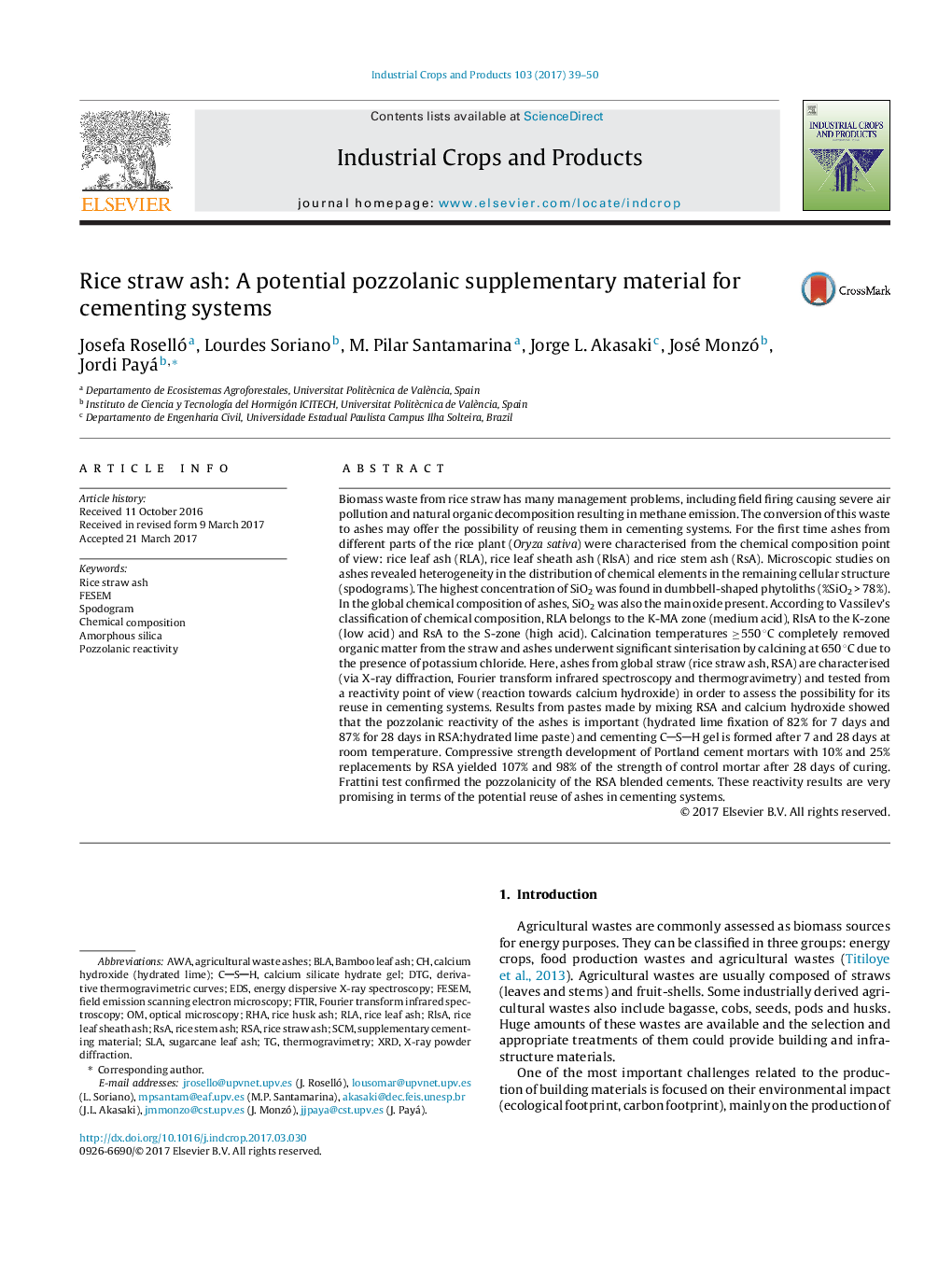| کد مقاله | کد نشریه | سال انتشار | مقاله انگلیسی | نسخه تمام متن |
|---|---|---|---|---|
| 5761936 | 1624807 | 2017 | 12 صفحه PDF | دانلود رایگان |
عنوان انگلیسی مقاله ISI
Rice straw ash: A potential pozzolanic supplementary material for cementing systems
ترجمه فارسی عنوان
خاکستر خرد شده برنج: مواد افزودنی پوزولانیک بالقوه برای سیستم های سیمان
دانلود مقاله + سفارش ترجمه
دانلود مقاله ISI انگلیسی
رایگان برای ایرانیان
کلمات کلیدی
SLAAWARLARHARSACSHDTGBLASCMFESEMEDSEnergy Dispersive X-ray Spectroscopy - اشعه ماوراء بنفش اشعه ایکسThermogravimetry - ترموگرامتریChemical composition - ترکیب شیمیاییBamboo leaf ash - خاکستر برگ بامبوRice Husk Ash - خاکستر پوسته برنجAmorphous silica - سیلیس آمورفFTIR - طیف سنج مادون قرمزFourier transform infrared spectroscopy - طیف سنجی مادون قرمز تبدیل فوریه یا طیف سنجی FTIRSupplementary cementing material - مواد افزودنی سیمانField emission scanning electron microscopy - میکروسکوپ الکترونی منتشر کننده انتشار میدانOptical microscopy - میکروسکوپ نوریPozzolanic reactivity - واکنش پذیری PozzolanicXRD - پراش اشعه ایکسX-ray powder diffraction - پراش پودر اشعه ایکس
موضوعات مرتبط
علوم زیستی و بیوفناوری
علوم کشاورزی و بیولوژیک
علوم زراعت و اصلاح نباتات
چکیده انگلیسی
Biomass waste from rice straw has many management problems, including field firing causing severe air pollution and natural organic decomposition resulting in methane emission. The conversion of this waste to ashes may offer the possibility of reusing them in cementing systems. For the first time ashes from different parts of the rice plant (Oryza sativa) were characterised from the chemical composition point of view: rice leaf ash (RLA), rice leaf sheath ash (RlsA) and rice stem ash (RsA). Microscopic studies on ashes revealed heterogeneity in the distribution of chemical elements in the remaining cellular structure (spodograms). The highest concentration of SiO2 was found in dumbbell-shaped phytoliths (%SiO2 > 78%). In the global chemical composition of ashes, SiO2 was also the main oxide present. According to Vassilev's classification of chemical composition, RLA belongs to the K-MA zone (medium acid), RlsA to the K-zone (low acid) and RsA to the S-zone (high acid). Calcination temperatures â¥550 °C completely removed organic matter from the straw and ashes underwent significant sinterisation by calcining at 650 °C due to the presence of potassium chloride. Here, ashes from global straw (rice straw ash, RSA) are characterised (via X-ray diffraction, Fourier transform infrared spectroscopy and thermogravimetry) and tested from a reactivity point of view (reaction towards calcium hydroxide) in order to assess the possibility for its reuse in cementing systems. Results from pastes made by mixing RSA and calcium hydroxide showed that the pozzolanic reactivity of the ashes is important (hydrated lime fixation of 82% for 7 days and 87% for 28 days in RSA:hydrated lime paste) and cementing CSH gel is formed after 7 and 28 days at room temperature. Compressive strength development of Portland cement mortars with 10% and 25% replacements by RSA yielded 107% and 98% of the strength of control mortar after 28 days of curing. Frattini test confirmed the pozzolanicity of the RSA blended cements. These reactivity results are very promising in terms of the potential reuse of ashes in cementing systems.
ناشر
Database: Elsevier - ScienceDirect (ساینس دایرکت)
Journal: Industrial Crops and Products - Volume 103, September 2017, Pages 39-50
Journal: Industrial Crops and Products - Volume 103, September 2017, Pages 39-50
نویسندگان
Josefa Roselló, Lourdes Soriano, M. Pilar Santamarina, Jorge L. Akasaki, José Monzó, Jordi Payá,
